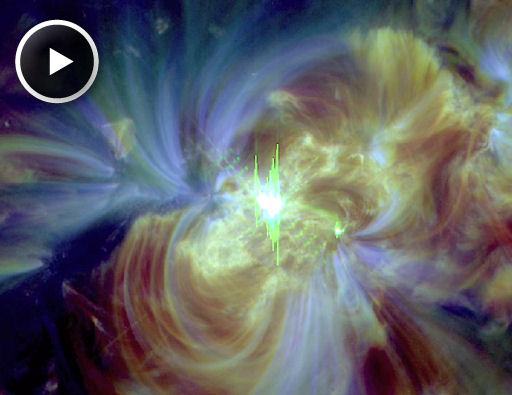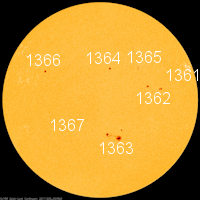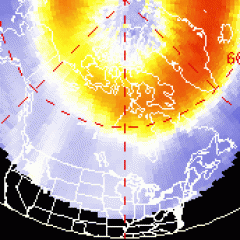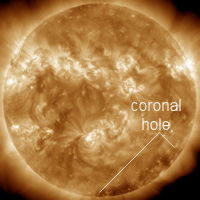~Space Weather Update~ 12~6~11
SUBSIDING SUNSPOT: After three days of meteoric growth, sunspot AR1363 has reversed course and is beginning to decay. As its magnetic field relaxes, the active region poses a subsiding threat for strong flares. It's not dead yet, though, as this snapshot shows:
NASA's Solar Dynamics Observatory recorded this extreme ultraviolet flash from a C6-class solar flare in the sunspot's magnetic canopy during the late hours of Dec. 5th. AR1363 is crackling with low-level flares like this one.
There is still a slim chance that AR1363 will buck the trend and unleash a major M- or X-class eruption. If such an flare happens today, it will be geoeffective because the sunspot is facing Earth. Quiet, however, is more likely. Solar flare alerts: text, phone.

![]()
Solar wind
speed: 332.5 km/sec
density: 2.6 protons/cm3
explanation | more data
Updated: Today at 0043 UT
![]()
X-ray Solar Flares
6-hr max: B7 0853 UT Dec06
24-hr: B9 0317 UT Dec06
explanation | more data
Updated: Today at: 1400 UT
![]()
![]()
![]()
Daily Sun: 06 Dec 11
![]()
![]()
Sunspot 1363 is experiencing the onset of decay and poses a subsiding threat for M-class solar flares. Credit: SDO/HMI
![]()
![]()
![]()
Sunspot number: 185
What is the sunspot number?
Updated 05 Dec 2011
Spotless Days
Current Stretch: 0 days
2011 total: 2 days (<1%)
2010 total: 51 days (14%)
2009 total: 260 days (71%)
Since 2004: 821 days
Typical Solar Min: 486 days
Updated 05 Dec 2011
The Radio Sun
10.7 cm flux: 158 sfu
explanation | more data
Updated 05 Dec 2011
![]()
![]()
![]()
Current Auroral Oval:
![]()
Switch to: Europe, USA, New Zealand, Antarctica
Credit: NOAA/POES
![]()
![]()
![]()
Planetary K-index
Now: Kp= 0 quiet
24-hr max: Kp= 1 quiet
explanation | more data
![]()
Interplanetary Mag. Field
Btotal: 2.9 nT
Bz: 0.2 nT south
explanation | more data
Updated: Today at 0045 UT
![]()
![]()
![]()
Coronal Holes: 06 Dec 11
![]()
![]()
There are no large coronal holes on the Earthside of the sun. Credit: SDO/AIA.





